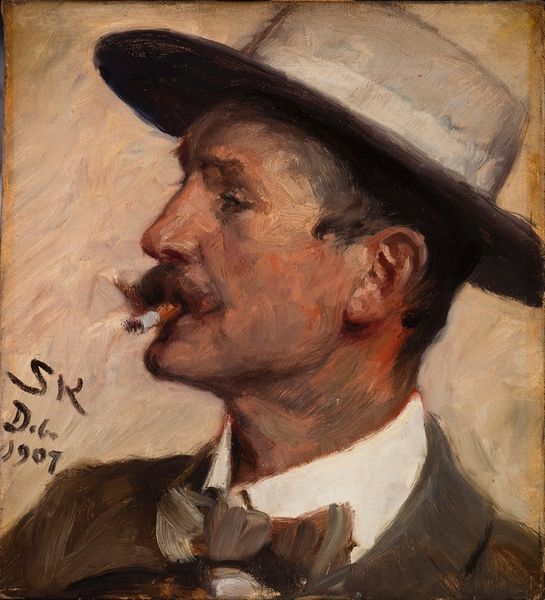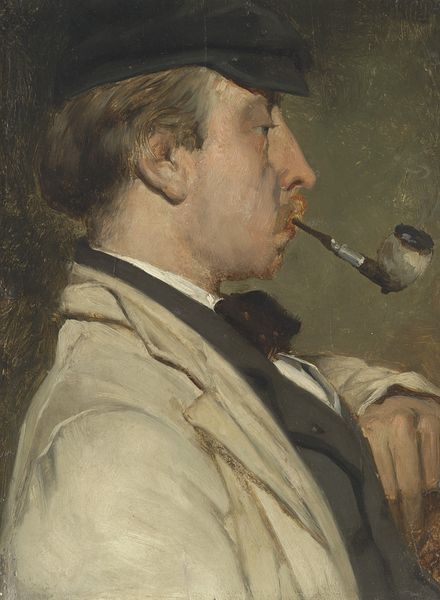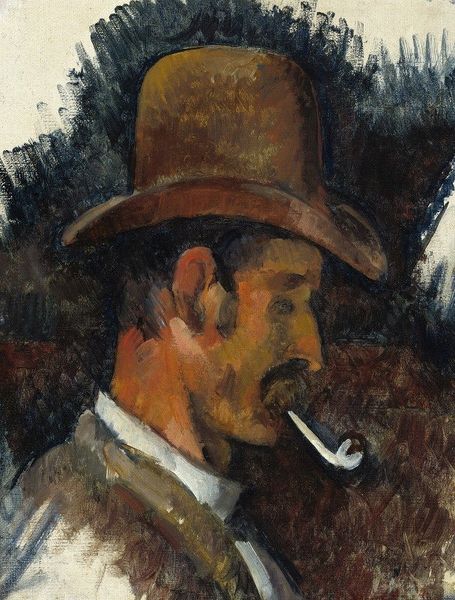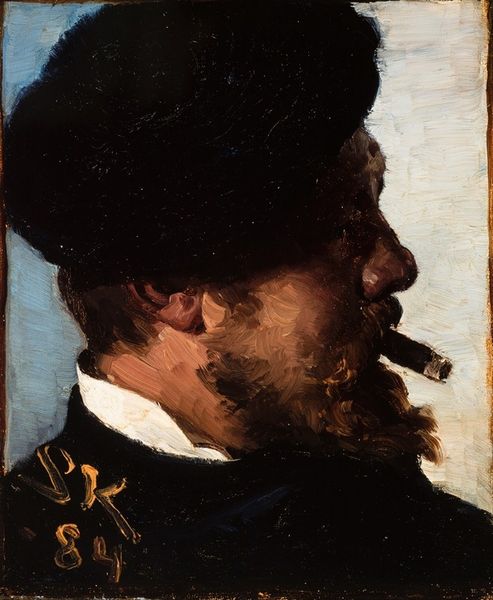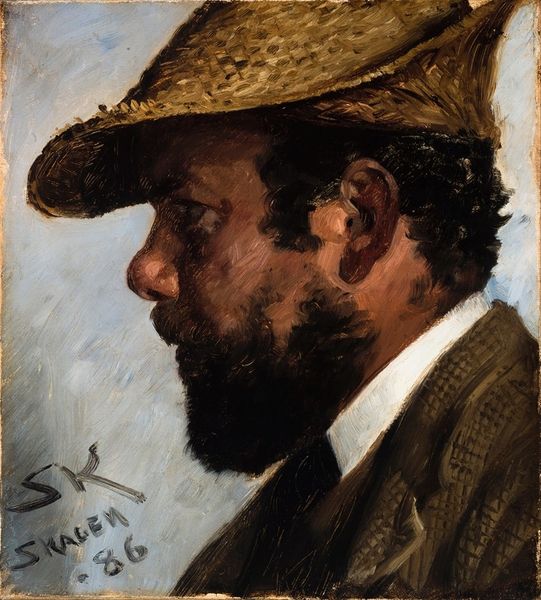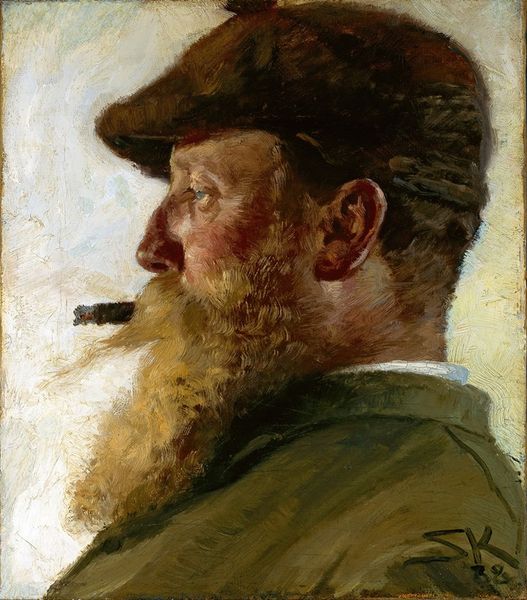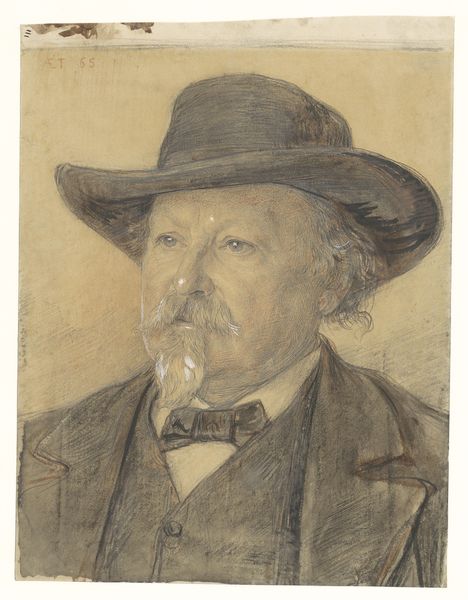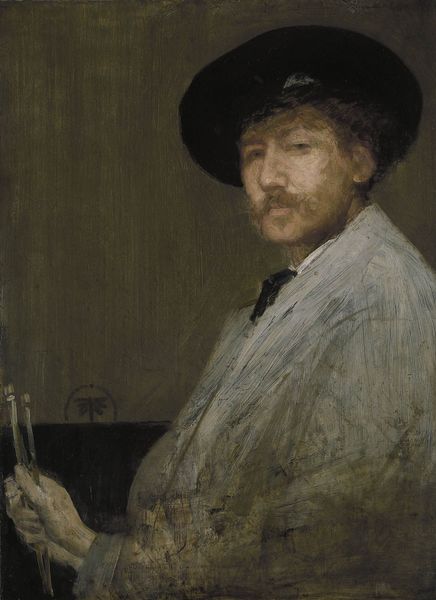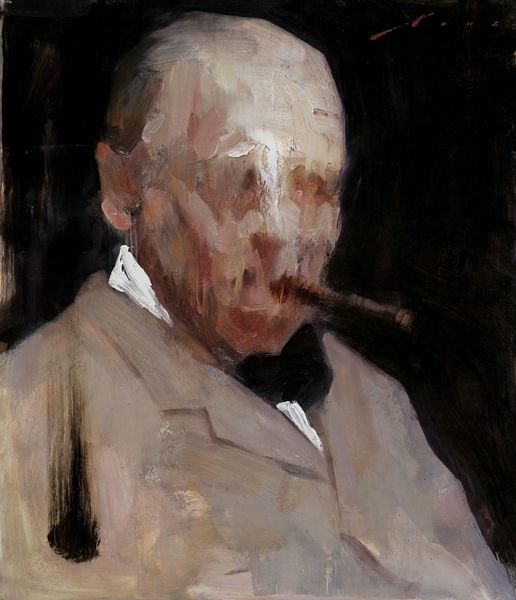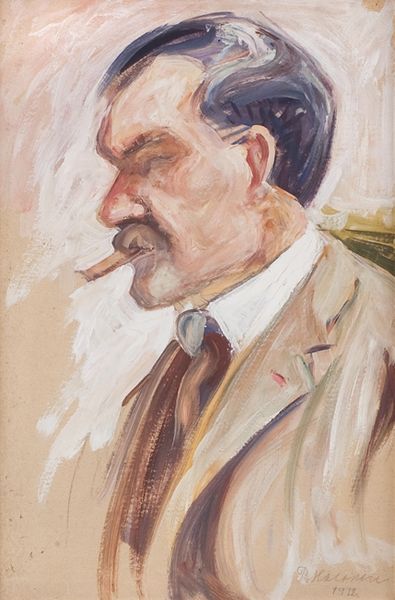
oil-paint, impasto
#
portrait
#
figurative
#
impressionism
#
oil-paint
#
impasto
#
realism
Copyright: Public Domain: Artvee
Editor: Here we have Peder Severin Krøyer's "Portrait of Vilhelm Rosenstand," created in 1886 using oil paint. There's something intriguing about the brushwork – almost sculptural. What strikes you most about its formal elements? Curator: The impasto technique is indeed significant, lending a palpable texture to the representation. Observe how the light interacts with the raised surfaces, particularly in the depiction of Rosenstand's face and beard. The brushstrokes are not merely representational but possess an independent, tactile quality. How does this materiality inform your understanding of the subject? Editor: I suppose it makes him feel more present, almost tangible, rather than just an image. But the subdued palette keeps it from being overwhelming. Do you see a contrast in the handling of different areas? Curator: Precisely. The artist deploys a sophisticated contrast. Note the relative smoothness of the background compared to the textured foreground figure. This deliberate contrast amplifies the figure's prominence and accentuates the play of light across the composition. Furthermore, the limited color palette serves to unify the image, drawing attention to the nuances of tone and texture. Are there any other compositional elements you find noteworthy? Editor: The diagonal created by the cigar, and then echoed in the tilt of his cap, seems like an intentional choice to create dynamism in an otherwise still portrait. Curator: A keen observation! Indeed, those diagonal elements subtly destabilize the composition, preventing it from becoming overly static. This dynamism, achieved through the arrangement of forms and the application of paint, is key to the work's overall effect. It shows an engagement with formal problems as much as it displays a commitment to realistically represent its subject. Editor: It’s fascinating how analyzing just the formal aspects can reveal so much about the artist's intent and the overall impact of the work. Curator: Exactly. By focusing on these intrinsic qualities, we begin to understand the artistic choices and their profound effects on our perception of the subject.
Comments
No comments
Be the first to comment and join the conversation on the ultimate creative platform.
